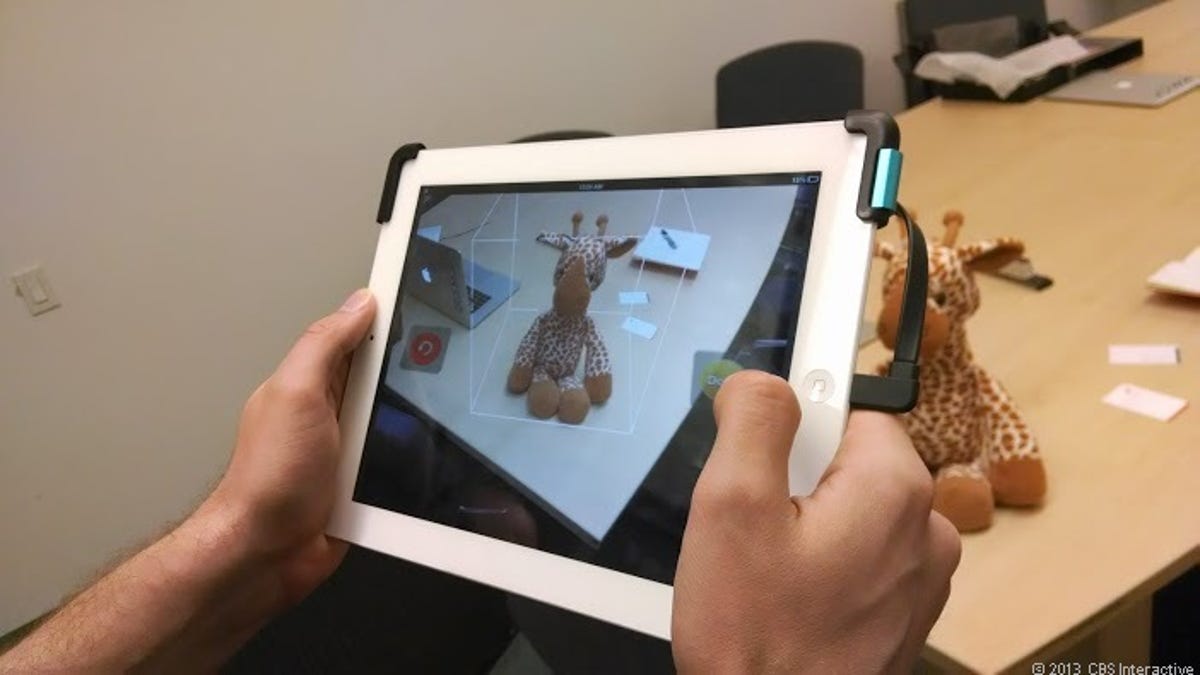The new Structure Sensor from startup company Occipital promises to convert iPads and iPhones into 3D scanners. The device, which launches today on Kickstarter, is designed to create accurate three-dimensional images of objects in the real world.
I recently had the opportunity to sit down with Occipital CEO Jeff Powers and some of the team behind the Structure Sensor to demo the gadget first hand. Essentially the Structure consists of a bracket-style clip that attaches to the camera side of Apple’s iPad.
Related stories
- Apple reportedly working on new iPad Mini with A15 processor
- Apple gives iPad Pro a 5G option, though carrier plans will cost you
- iPad Magic Keyboard works with M1-powered tablets, now in white
Connecting to the iPad via its Lightning cable, the Structure then works in unison with its own infrared sensor and black-and-white camera (for depth perception) along with the tablet’s onboard imaging system. Commanded by mobile apps living on the iPad, this setup then has the power to “sense” a wide range of objects in real time.
So what can you actually do with this gizmo? Quite a bit judging from what I saw during my briefing. The Structure was able to create 3D topographical models of room interiors, the human body (including my arm, wrist, and hand), plus a virtual representation of a plush teddy bear.
Powers explained to me that the potential use cases for the Structure are vast. For instance you could take that recorded data and feed it into a 3D printer then have it construct a nearly identical replica. Need a replacement machine part? No problem, simple scan it and create a carbon 3D copy, if you will.


Brian Bennett/CNET
Perhaps my favorite potential application is to scan priceless sculptures or other works of art then print them out at home. Now that would put a whole new spin on vacation fun. Of course as you can imagine, the Structure and other devices like it could also open up another Pandora’s box of copyright infringement and privacy abuse. After all, people already snap creep shots with their phones. Just imagine folks doing the same sort of thing but now in 3D.
And if you think the Structure is just for iOS devices, think again. Occipital says it plans on offering a “hacker cable,” too, along with open-source drivers. These tools according to the company allow the Structure Sensor to operate with other computing platforms including Android, Linux, and OS X.
Interested in learning more or about even getting your hands on the Occipital Structure Sensor? The company says the first 300 Kickstarter backers who pledge $329 will receive the sensor, iPad bracket, and Lightning cable. After that 100 beta units scheduled to arrive by December 2013 will be offered up for $500. Production-level Structure Sensor units are slated to arrive on February 14, 2014, but final pricing hasn’t been locked down just yet.



